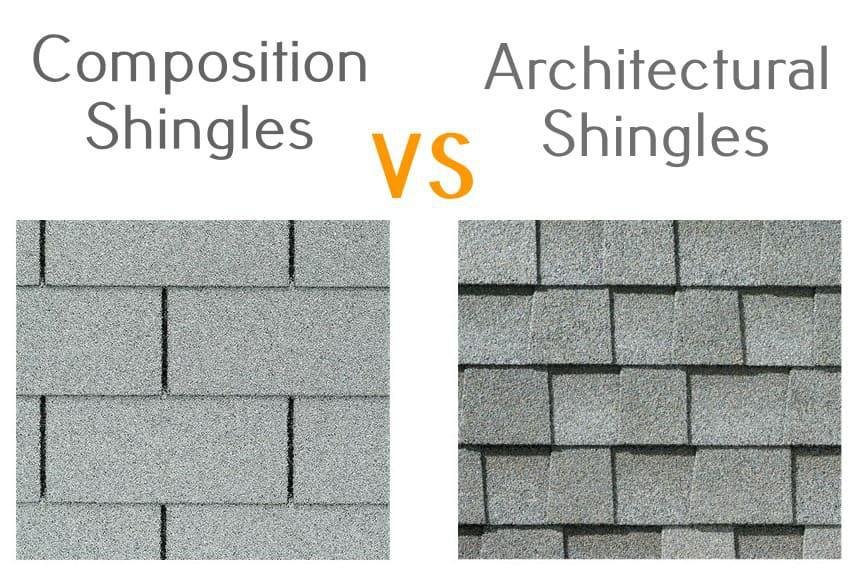What differentiates composition shingles from architectural shingles? These two types of asphalt shingles are popular choices for residential roofing, but they differ in physical composition, wind resistance, durability, aesthetics, and cost.
This article explores these differences in detail, helping you choose the right type of roofing material for your home.
Are Architectural Shingles Worth Extra Cost?
Both composition shingles and architectural shingles are widely used in the roofing services industry. However, these two roofing materials differ significantly in terms of cost. Architectural shingles typically cost more but offer a more durable and long-lasting solution, enhancing a home’s curb appeal and potentially reducing the frequency of roof replacement.
According to sources, architectural shingles typically cost more in comparison to composition shingles. However, these shingles can offer a long-time warranty which can go more than 50 years. Even some architectural shingles provide a lifetime warranty.

Composition shingles are more cost-effective; however, the warranty typically ranges from 25 to 30 years, which is less compared to the more durable architectural shingles. While both types promise a lengthy service life, architectural shingles often come with warranties extending over 50 years, reflecting their superior durability.
- The lifespan
The shingles’ warranty doesn’t represent how long you can keep the shingles in use. Composition shingles, for example, typically will last only for 7-10 years only. This can also be lower when the shingles are exposed to snow, rain, strong winds, and excessive heat.
Compared to that shingle’s lifespan, architectural shingles are more weatherproof. This is thanks to its high-quality composition and the high-durability material it uses. Hence, even if snow, rain, wind, and heat attack the shingle, your architectural shingle can withstand it for more than 18-20 years.
- Wind ratings
Discussing wind ratings, another differentiating factor between composition and architectural shingles is their capability to withstand high winds.
Composite asphalt shingles typically have a wind rating of 60 mph, while architectural shingles boast stronger wind resistance, ranging between 80 mph and 120 mph, making them a more robust choice for areas prone to severe weather.
In contrast, your architectural shingles’ wind ratings are between 80 mph and 120 mph. Sounds amazing, doesn’t it? This amazing feature is supported by the thick material it uses to make the shingles. This is also why architectural shingles tend to be more wind-proof.
- The Aesthetics
Aside from the lifespan and the wind ratings, the aesthetics of both shingles are different. Composition shingles are flat, while architectural shingles are dimensional. This means this type of shingles offers a dimensional look given that there are multiple layers that are adhered to the base.
Although sources mentioned that the look of architectural shingles tends to be more favourable, there are people who do not prefer the look. Despite the drawbacks mentioned earlier, some of them prefer the neat looks of composition shingles.
- The composition
Both types of shingles use asphalt and adhesives to make. However, how much asphalt they use is different from one another.
The primary difference is the amount of asphalt used in making the product. Sources mentioned that architectural shingles use more asphalt. This results in more weight owned by the architectural shingles, and the base is way thicker than the counterpart.
In addition, architectural shingles are said to have a better quality of adhesives. So, not only is the asphalt better in amount and quality, but the adhesive is also better compared to the composite one.
So, are architectural shingles worth the extra cost? Well, to decide on its advantages, it’s way easier to fix your choice on this type of shingle. However, if you choose your product budget-wise, then choosing composite shingles is still a good score to consider.
Are Architectural Shingles Better?
Summing it all up, architectural shingles are better for many aspects it has. The aspects will include the material used, the lifespan, the warranty offered, the aesthetics, and the wind ratings.
However, the cost of composition shingles vs architectural shingles is one thing that makes composition shingles better than the other. Architectural shingles are also heavier given the thicker materials used. So, which one will you choose?


